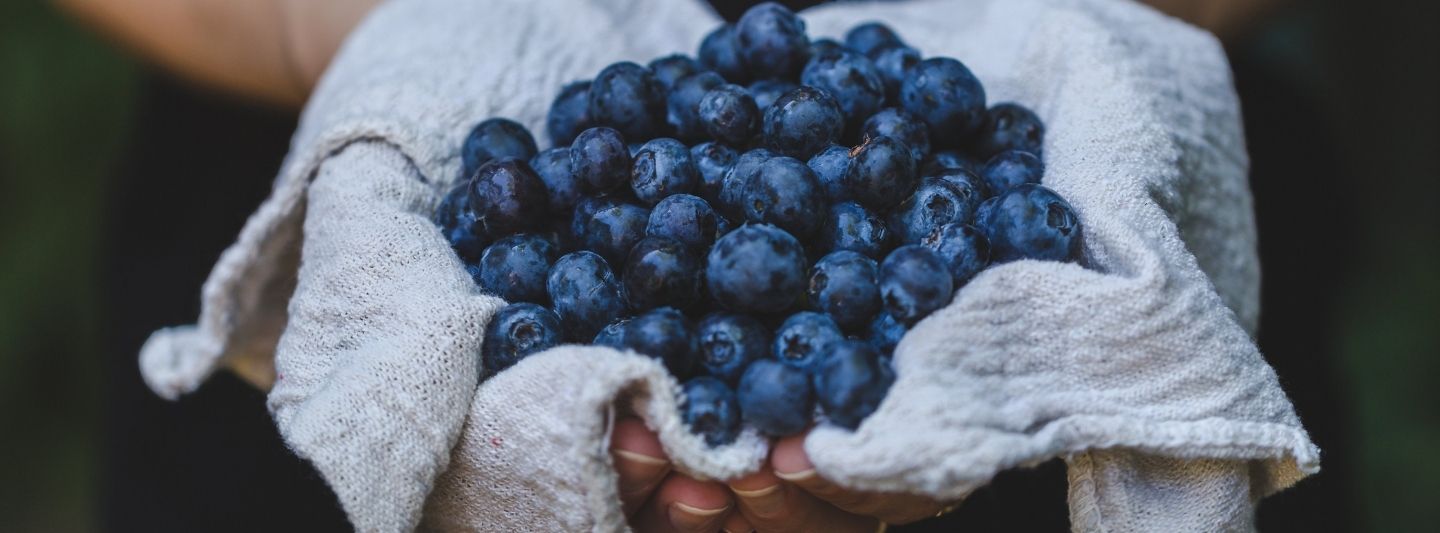
3 Common Dieting Mistakes to Avoid
Common dieting mistakes will not only limit the amount of fat you lose but also compromise your ability to retain or even build muscle throughout the body recomposition process.

What better way to way to usher in the new year than to indulge in something nutritious? Berries are probably the one food at the top of every Nutritionist’s list. Its versatility and the fact that they are in season all year long is a win-win for everyone!
Covid-19 has brought upon the consumption of more antioxidants than ever. Our Nutritional Therapist, Puja Bansal shares why berries are one of the best things you can eat and the long list of benefits provided by these amazing berries:
It’s been a very berry year for me and all for good reason. If there is one thing I recommend repeatedly, it’s incorporating antioxidants into the diet through the intake of colourful foods. Colour has not only been shown to boost our gut microbiomes but also boosts brain health and influences happiness and well-being, which is so vital to all of us.
Health Benefits of Berries
The health benefits associated with berries come with their anti-inflammatory, antioxidant properties and is important as our bodies are constantly being bombarded with oxidative stress. Oxidative stress is our bodies natural response to all the chemical reactions that are happening within us, and there are billions of enzymatic reactions happening every second. Normal metabolism such as just eating produces oxidative stress in our body. Thus, increasing our levels of antioxidants can help combat that the negative side effects that are associated with oxidative stress, of the most vital ones being ageing.
Berries have been a valuable food staple for humans long before the start of agriculture and research shows that berries may even have been a seasonal fruit dating back to the hunter-gatherer era. If it was good enough for them, it is good enough for us. Human biology and our gut microbiomes may have evolved eating this fruit which has enabled us to keep the microflora that feeds off these different-coloured pigments. The ancient Romans believed that strawberries had medicinal properties and when it comes to food being medicine. In our modern civilization, both in vivo and in vitro studies have shown that berries confer many health benefits, through the modulating activities of these anthocyanins.
Anthocyanins, meaning blue flowers in Greek belong to a group of phytochemicals, which are responsible for the red, blue, purple pigments present in berry fruits, vegetables, grapes and yes, red wine. These anthocyanins are popular for their pigments as they are abundantly used as a preservative and for food colouring properties. The importance of anthocyanins has gained popularity as research has shown that they confer a wide range of health-promoting properties. Anthocyanins are considered “functional food” as they are contributed to having functional benefits at the cellular level, meaning they have the ability to change our genetic blueprint.
There are approximately 17 anthocyanidins found in nature, of which only 6 are widely known. Numerous studies have now linked these anthocyanins with antioxidant, anti-inflammatory, and anti-carcinogenic properties amidst many other health benefits. These exact anthocyanins have been linked to a reduction in neurodegenerative diseases, as well as diabetes and weight loss. The highest consumption of anthocyanins comes from research from the Italians (of course) likely due to their higher intake of a Mediterranean diet, which includes berries, other red and blue fruit, and red wine.
Why Blueberries Are My Favourite
Of all the berries out there, blueberries top my list of functional foods. Blueberries contain a large amount of phytochemicals and a regular intake of blueberries has been linked with a reduced risk of cardiovascular disease, type 2 diabetes, improved weight management and neuroprotection. Blueberries have also been shown to reduce arterial stiffness and reduce negative biomarkers when it comes to cardiovascular disease. In a placebo-controlled study of 58 diabetics, blueberry intake led to a reduction in LDL cholesterol, triglycerides, adiponectin, and an increase in HDL cholesterol. Additionally, blueberries have been shown to induce Nitric Oxide which is a vasodilator and may contribute to the positive health benefits associated with cardiovascular and endothelial health. Anthocyanin extract from bilberry and black currant has also been shown to improve insulin sensitivity, plasma lipid profile and reduced plasma markers of oxidative stress.
Other Notable Benefits of Berries
Anti-cancer properties
Additionally, berries have been extensively studied for their anti-cancer properties, especially with gastrointestinal (GI) cancers. With the rise of industrial development in our modern era, food consumption has also moved away from fresh sources to more processed food which has shown an overall rise in inflammatory diseases of the gastrointestinal tract such as Crohn’s, ulcerative colitis, and intestinal cancers. GI cancers comprise 35% of all cancers and unfortunately, there aren’t good biomarkers in pertinence to cancers relating to the GI tract.
Berries confer many health benefits within the gastrointestinal tract, mainly due to their fibre intake. Fibre within the diet has been shown to decrease inflammation, mainly due to the byproduct of these fibres called Short Chain Fatty Acids (SCFA). Our gut bacteria residing in the gut metabolize dietary fibres into these SCFA’s, which are acetate, propionate, and butyrate respectively. Among all the SCFA’s, butyrate has been extensively studied for its role in the suppression of colonic inflammation, tumour carcinogenesis and the ability to have neuroprotective effects.
Overall, these SCFA’s have shown to not only be fuel for our colonocytes which are the cells of our gut, but also have shown to have anti-proliferative, anti-cancer, and genetic modelling properties. In several human and animal studies, the consumption of dietary fibres regularly increases the number of Bifidobacterium in the gut. In my clinical experience, individuals who show a high level of Bifidobacterium in the GI tract, generally show lower markers of inflammation in the gut such as Calprotectin and pyruvate kinase.
All in all, berries confer a whole host of benefits and one of my favourite ways to eat berries is to top them on my granola or yoghurt. Berries are lovely on their own but eating them with a little bit of protein helps balance out blood sugar levels.
Featured Contributor:

Puja is a Registered Nutritional Therapist from the Institute for Optimum Nutrition, UK. She works with clients of all ages to enable their health and wellness goals with an emphasis on “food-centric” therapies and supplementation with Nutraceuticals. Puja also empowers them in making these necessary changes to their diet and lifestyle through motivational interviewing and behaviour change.
Nutritional Therapy has its roots in Functional Medicine, which is an evidence-based approach to healthcare where she does not look at symptoms in isolation, but gets to the root cause of the illness and works towards making simple sustainable changes through food that affect and revitalize all systems of the body. These changes are implemented in a structured approach where the client can implement them gradually and sustain them going further.
As a mom herself of two young boys, she not only talks the talk but walks the walk. She herself is a living example of a low carb/ketogenic approach to eating and has sustained that for 3 years with regular ketone testing. When she is not practising, you will see her in the kitchen whipping up some low-carb recipes for her family. In an attempt to constantly keep up with new research, she is currently pursuing her BSc Honors in Nutritional Therapy.